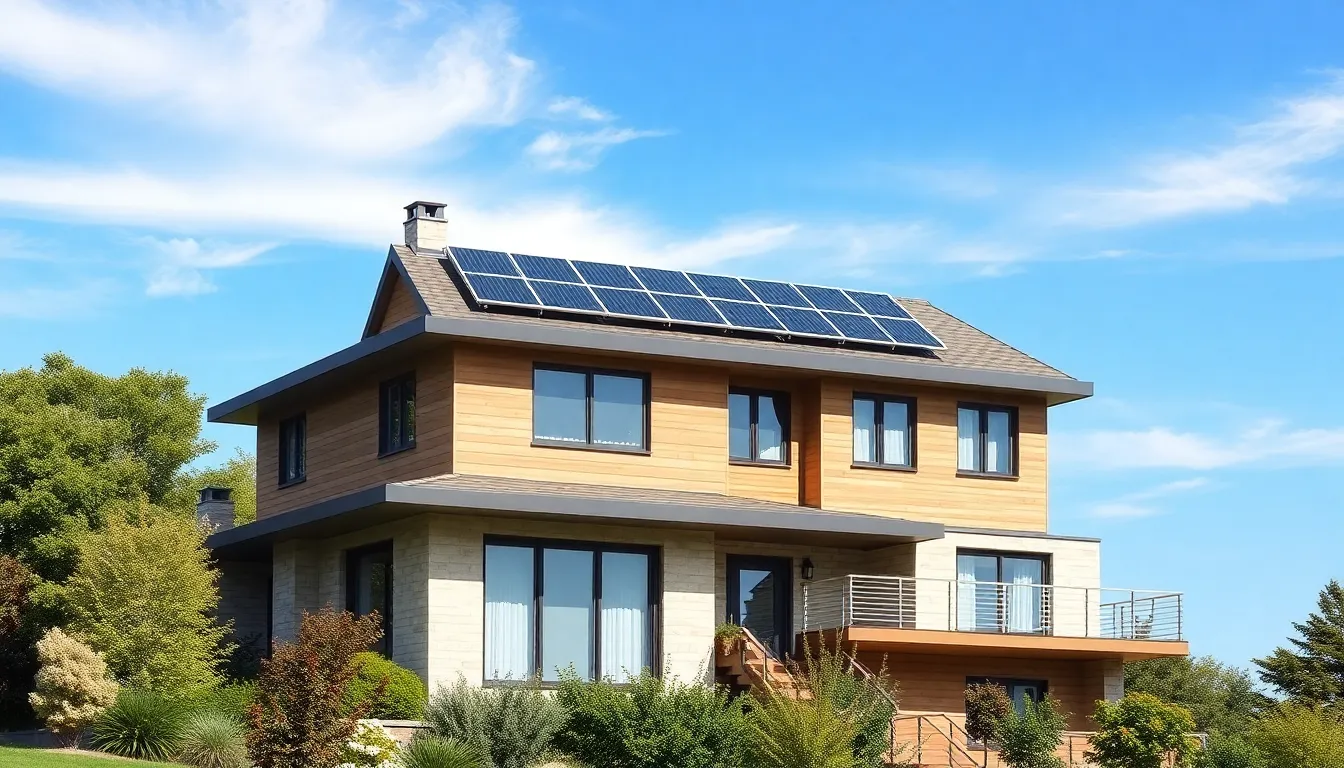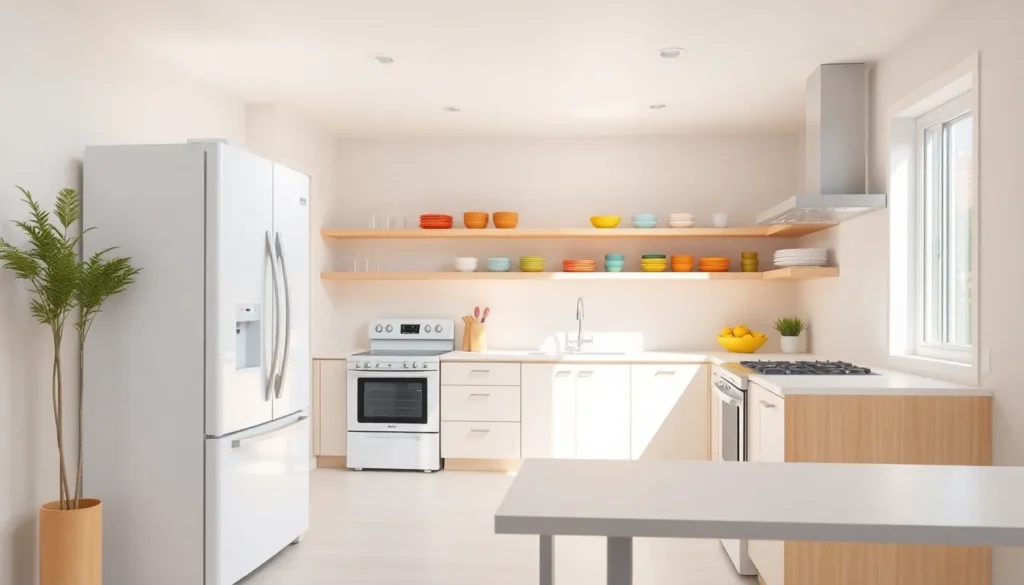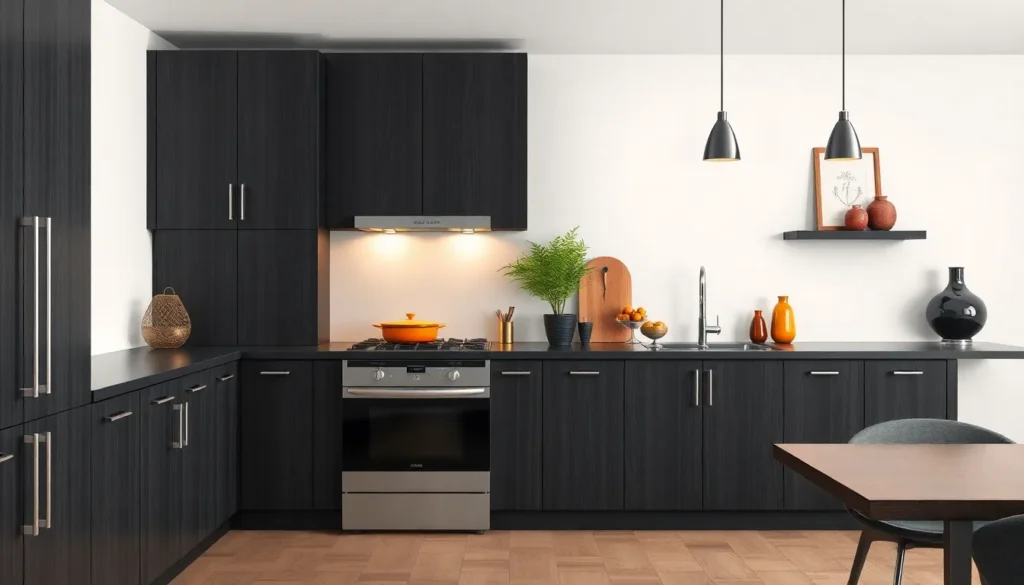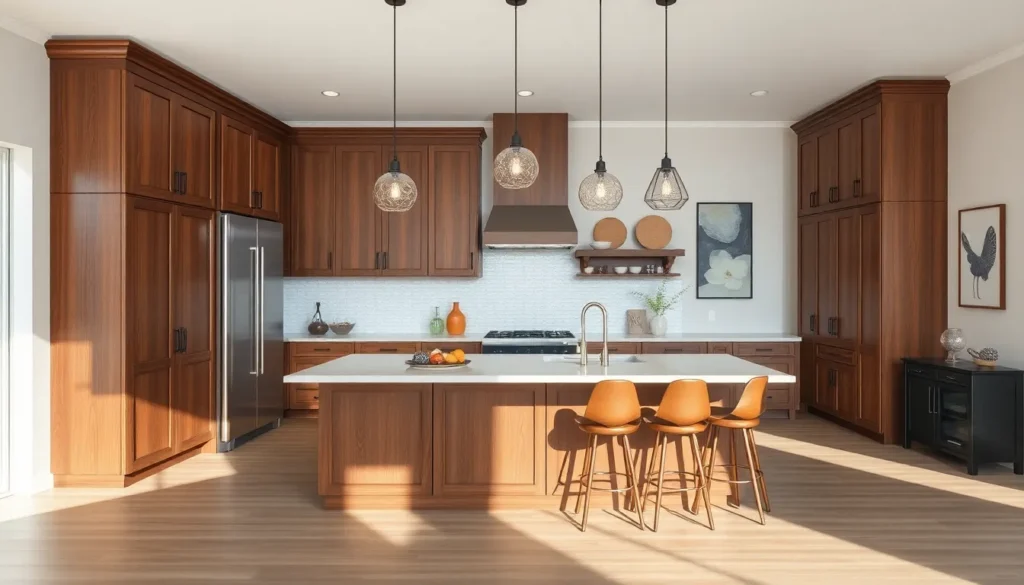As the world shifts toward sustainable living, solar-powered home construction emerges as a beacon of innovation. This approach not only harnesses the sun’s energy but also reduces reliance on traditional energy sources, making homes more environmentally friendly and cost-effective. With advancements in technology, builders can now integrate solar systems seamlessly into new designs, creating spaces that are both functional and eco-conscious.
Homeowners are increasingly drawn to solar-powered designs for their long-term savings and minimal environmental impact. From energy-efficient materials to smart home technologies, solar construction offers a comprehensive solution to modern housing needs. As the demand for green living continues to grow, understanding the benefits and possibilities of solar-powered homes becomes essential for anyone looking to invest in their future.
Table of Contents
ToggleOverview of Solar-Powered Home Construction
Solar-powered home construction integrates solar energy systems into building designs, enhancing sustainability. This method reduces reliance on non-renewable energy sources, promoting a clean ecological footprint. Key components include photovoltaic panels, solar water heaters, and energy-efficient appliances, all contributing to lower energy costs.
Technology plays a crucial role in development. Innovative building materials, such as solar shingles and energy-efficient insulation, improve energy retention. Builders utilize smart home technology to maximize energy management, allowing for real-time monitoring of energy consumption.
Solar-powered homes attract interest due to their financial and environmental advantages. Tax incentives and rebates further stimulate investment in solar infrastructure, making initial costs more manageable. Homeowners benefit from decreased utility bills and increased property values, reinforcing the attractiveness of solar-dedicated designs.
Sustainable construction practices support not just energy efficiency but also resource conservation. Designs emphasize passive solar techniques, maximizing natural light and reducing heating and cooling needs. Proper orientation and window placement significantly impact energy performance.
Solar-powered home construction signifies a major step toward a sustainable future, blending technology, cost savings, and environmental consciousness into residential living.
Benefits of Solar-Powered Home Construction

Solar-powered home construction offers significant advantages in environmental sustainability and economic savings. By harnessing renewable energy, these homes reduce reliance on fossil fuels and lower overall costs.
Environmental Impact
Solar-powered homes significantly decrease carbon emissions, contributing to a cleaner atmosphere. According to the U.S. Department of Energy, adopting solar energy can reduce residential greenhouse gas emissions by up to 80%. Furthermore, these homes promote biodiversity by minimizing habitat disruption, unlike traditional construction practices. The utilization of sustainably sourced building materials further enhances environmental benefits, ensuring minimal ecological footprint.
Cost Savings
Cost reduction remains a primary incentive for solar-powered home construction. Homeowners save on electricity bills with average annual savings of $1,500 by utilizing solar energy. Additionally, government incentives like the federal solar tax credit, which allows for a deduction of 26% on installation costs, make initial investments more feasible. Long-term financial benefits also include an increase in property value, as homes with solar installations typically sell for 17% more than those without.
Solar-powered homes not only provide energy independence but also ensure a sustainable future through intelligent financial planning.
Key Components of Solar-Powered Homes
Solar-powered homes incorporate several essential elements that enhance energy efficiency and sustainability. These components work together to optimize energy use and reduce reliance on traditional energy sources.
Solar Panels
Solar panels, or photovoltaic (PV) panels, convert sunlight into electricity. They play a crucial role in harnessing solar energy for residential use. Most solar panels consist of silicon-based solar cells that generate direct current (DC) electricity, which is then transformed into alternating current (AC) electricity by inverters for home consumption. Installation typically covers rooftops or open areas, maximizing sunlight exposure. Many homeowners realize a significant decrease in energy bills, with the average savings estimated at $1,500 annually.
Energy Storage Systems
Energy storage systems, particularly lithium-ion batteries, store excess energy generated during the day for later use. These systems allow homeowners to utilize solar power even when the sun isn’t shining, enhancing energy independence. When equipped with energy storage, homes can power essential appliances and systems during outages, providing additional security and reliability. Such systems also enable homeowners to shift energy use to non-peak hours, further optimizing cost savings. The integration of energy storage can elevate a home’s energy efficiency, making it a critical component of solar-powered construction.
Design Considerations for Solar-Powered Homes
Designing solar-powered homes requires careful planning to maximize solar energy efficiency. Critical factors include site orientation and insulation strategies that optimize energy performance.
Site Orientation
Site orientation heavily influences solar energy capture. South-facing roofs are ideal for solar panel placement, as they receive the most sunlight throughout the day. Optimal angles for panels range between 30 to 45 degrees, maximizing exposure to sunlight. A well-oriented home reduces reliance on artificial lighting, allowing natural light to illuminate spaces effectively. Landscape features, like trees or buildings, should not obstruct solar access, enhancing overall efficiency.
Insulation Strategies
Effective insulation plays a crucial role in maintaining energy efficiency in solar-powered homes. High-performance insulation materials, such as spray foam or cellulose, enhance thermal resistance, keeping spaces comfortable year-round. Properly sealing gaps and seams prevents air leakage, reducing heating and cooling demands. Incorporating insulated windows minimizes heat loss while allowing natural light. Structures should emphasize a continuous thermal envelope, which further enhances energy retention and reduces overall energy consumption.
Solar-powered home construction represents a transformative shift towards sustainable living. By harnessing the sun’s energy homeowners can achieve significant cost savings while reducing their environmental footprint. The integration of innovative technologies and materials enhances energy efficiency and promotes a more resilient lifestyle.
As the demand for eco-friendly solutions grows homeowners are increasingly drawn to the benefits of solar-powered designs. With government incentives making these options more accessible families can invest in their future while contributing to a healthier planet. Embracing solar energy not only leads to lower utility bills but also supports a sustainable and energy-independent way of living.









